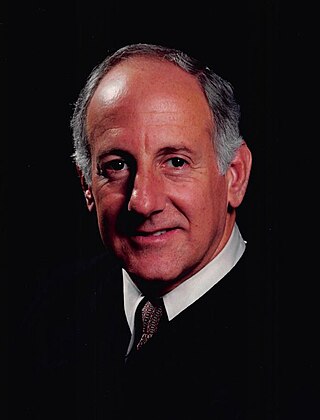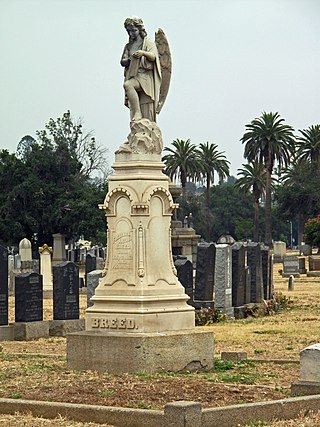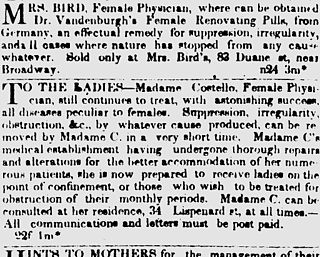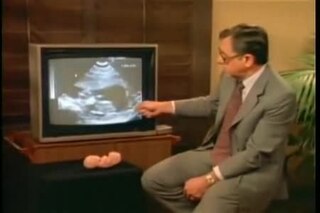Related Research Articles
The abortion debate is a longstanding, ongoing controversy that touches on the moral, legal, medical, and religious aspects of induced abortion. In English-speaking countries, the debate most visibly polarizes around adherents of the self-described "pro-choice" and "pro-life" movements. Pro-choice supporters uphold that individuals have the right to make their own decisions about their reproductive health, and that they should have the option to end a pregnancy if they choose to do so, taking into account various factors such as the stage of fetal development, the health of the mother, and the circumstances of the conception. Pro-life advocates, on the other hand, maintain that a fetus is a human being with inherent rights that cannot be overridden by the mother’s choice or circumstances, and that abortion is morally wrong in most or all cases. Both terms are considered loaded in mainstream media, where terms such as "abortion rights" or "anti-abortion" are generally preferred.

The Ronald Reagan Presidential Library is the repository of presidential records from the Reagan administration. Located in Simi Valley, California, the library is administered by the National Archives and Records Administration and is the burial place of Ronald and Nancy Reagan. It contains millions of documents, photographs, films and tapes. It also contains memorabilia and a permanent exhibit of Ronald Reagan's life.

John George Schmitz was a Republican member of the United States House of Representatives and California State Senate from Orange County, California. He was also a member of the John Birch Society. In 1972 he was the candidate for President of the United States of the American Independent Party, later known as the American Party.

William Patrick Clark Jr. was an American rancher, judge, and public servant who served under President Ronald Reagan as the Deputy Secretary of State from 1981 to 1982, United States National Security Advisor from 1982 to 1983, and the Secretary of the Interior from 1983 to 1985.

Ronald Marc George is an American jurist. He previously served as the 27th Chief Justice of California from 1996 to 2011. Governor Pete Wilson appointed George as an associate justice of the Supreme Court in 1991 and elevated George to Chief Justice in 1996.

Grand View Memorial Park and Crematory is a historic cemetery located in Glendale, California, in the United States. Established in 1884 as Glendale Cemetery, it changed its name to Grand View Memorial Park in 1919. The cemetery was the focus of a scandal that began in 2005, during which the operators were accused of leaving thousands of cremated remains unburied. New owners changed the name to Grand View Memorial Park and Crematory in 2015 and began a restoration of the property.

Evergreen Memorial Park & Crematory is a cemetery in the East Side neighborhood of Boyle Heights, Los Angeles, California.

John Kalar Van de Kamp was an American politician and lawyer who served as Los Angeles County District Attorney from 1975 until 1981, and then as the 28th Attorney General of California from 1983 until 1991.

Carol Downer is an American feminist lawyer and non-fiction author who focused her career on abortion rights and women's health around the world. She was involved in the creation of the self-help movement and the first self-help clinic in LA, which later became a model and inspiration for dozens of self-help clinics across the United States.

The practice of induced abortion—the deliberate termination of a pregnancy—has been known since ancient times. Various methods have been used to perform or attempt abortion, including the administration of abortifacient herbs, the use of sharpened implements, the application of abdominal pressure, and other techniques. The term abortion, or more precisely spontaneous abortion, is sometimes used to refer to a naturally occurring condition that ends a pregnancy, that is, to what is popularly called a miscarriage. But in what follows the term abortion will always refer to an induced abortion.

The Silent Scream is a 1984 anti-abortion film created and narrated by Bernard Nathanson, a former abortion provider who had become an anti-abortion activist. It was produced by Crusade for Life, Inc., an evangelical anti-abortion organization, and has been described as a pro-life propaganda film. The film depicts the abortion process via ultrasound and shows an abortion taking place in the uterus. During the abortion process, the fetus is described as appearing to make outcries of pain and discomfort. The video has been a popular tool used by the anti-abortion campaign in arguing against abortion, but it has been criticized as misleading by members of the medical community.

Evelyn Lorraine Rothman was an American activist. She was a founding member of the feminist self-help clinic movement. In 1971, she invented the Del-Em menstrual extraction kit to make abortions available to women before Roe v. Wade. She was an advocate of self-induced abortions.

The National Organization for Women (NOW) is an American feminist organization. Founded in 1966, it is legally a 501(c)(4) social welfare organization. The organization consists of 550 chapters in all 50 U.S. states and in Washington, D.C. It is the largest feminist organization in the United States with around 500,000 members. NOW is regarded as one of the main liberal feminist organizations in the US, and primarily lobbies for gender equality within the existing political system. NOW campaigns for constitutional equality, economic justice, reproductive rights, LGBTQIA+ rights and racial justice, and against violence against women.
This is a timeline of reproductive rights legislation, a chronological list of laws and legal decisions affecting human reproductive rights. Reproductive rights are a sub-set of human rights pertaining to issues of reproduction and reproductive health. These rights may include some or all of the following: the right to legal or safe abortion, the right to birth control, the right to access quality reproductive healthcare, and the right to education and access in order to make reproductive choices free from coercion, discrimination, and violence. Reproductive rights may also include the right to receive education about contraception and sexually transmitted infections, and freedom from coerced sterilization, abortion, and contraception, and protection from practices such as female genital mutilation (FGM).
Ronald Reagan was the 40th president of the United States from 1981 to 1989. Previously, he was the 33rd governor of California from 1967 to 1975 and acted in Hollywood films from 1937 to 1964, the same year he energized the American conservative movement. Reagan's basic foreign policy was to equal and surpass the Soviet Union in military strength, and put it on the road to what he called "the ash heap of history". By 1985, he began to cooperate closely with Soviet leader Mikhail Gorbachev, whom he became friends and negotiated large-scale disarmament projects with. The Cold War was fading away and suddenly ended as the Soviets lost control of Eastern Europe almost overnight in October 1989, nine months after Reagan was replaced in the White House by his vice president, George H. W. Bush, who was following Reagan's policies. The dissolution of the Soviet Union took place in December 1991. In terms of the Reagan Doctrine, he promoted military, financial, and diplomatic support for anti-communist insurgencies in Afghanistan, Nicaragua, and numerous other countries. For the most part, local communist power collapsed when the Soviet Union collapsed.
Odd Fellows Cemetery is a cemetery in the Boyle Heights neighborhood of Los Angeles, California. It is notable for specializing in cremation of obese individuals, especially those over 400 pounds (180 kg).
Fran Avallone (1937–2003), born Frances Janet Weinstein, was an American abortion rights advocate. She was director of New Jersey Right to Choose as well as Choice New Jersey, a coalition of 30 abortion rights groups.
Abortion in California is legal up to the point of fetal viability. An abortion ban was in place by 1900, and by 1950, it was a criminal offense for a woman to have an abortion. In 1962, the American Law Institute published their model penal code as it applied to abortions, with three circumstances where they believed a physician could justifiably perform an abortion, and California adopted a version of this code. In 2002, California passed a law guaranteeing women the right to have an abortion "prior to viability of the fetus, or when the abortion is necessary to protect the life or health of the woman." In 2022, California voters overwhelmingly approved Proposition 1, which amended the Constitution of California to explicitly protect the right to abortion and contraception by a margin of 33.76%.
Box v. Planned Parenthood of Indiana and Kentucky, Inc., No. 18-483, 587 U.S. ___, 139 S.Ct. 1780 (2019), was a United States Supreme Court case dealing with the constitutionality of a 2016 anti-abortion law passed in the state of Indiana. Indiana's law sought to ban abortions performed solely on the basis of the fetus' gender, race, ethnicity, or disabilities. Lower courts had blocked enforcement of the law for violating a woman's right to abortion under privacy concerns within the Fourteenth Amendment, as previously found in the landmark cases Roe v. Wade and Planned Parenthood v. Casey. The lower courts also blocked enforcement of another portion of the law that required the disposal of aborted fetuses through burial or cremation. The per curiam decision by the Supreme Court overturned the injunction on the fetal disposal portion of the law, but otherwise did not challenge or confirm the lower courts' ruling on the non-discrimination clauses, leaving these in place.

The 1982 California Attorney General election was held on November 2, 1982. Democratic nominee John Van de Kamp defeated Republican nominee George Nicholson with 52.83% of the vote.
References
- 1 2 Raimundo, Jeff (March 19, 1985). "High court stymies LA burial of fetuses".
- 1 2 Blake, Gene (11 February 1982). "Secret Meeting Set in Fetus Discovery Case". Los Angeles Times . p. SD_A13.
- ↑ "Meeting on Fetuses". Los Angeles Times . 18 February 1982. p. D4.
- 1 2 3 4 Michaelson, Judith (6 February 1982). "500 Fetuses Found in Storage". Los Angeles Times . p. B6.
- ↑ "Officials Find 200 to 400 More Fetuses". Los Angeles Times . 24 February 1982. p. A3.
- ↑ Jacobs, Paul (26 February 1982). "Legality of State Abortion Law Doubted: Discovery of 2,000 Fetuses Raises Issue of Validity of Prohibitions". Los Angeles Times . p. B1.
- ↑ "2,000 fetuses linked to out-of-business laboratory". Lakeland Ledger . Associated Press. 25 February 1982. p. 19.
- 1 2 Jones, Jack (27 May 1982). "Each Stored Fetus to Be Examined: L.A. District Attorney to Decide Whether to File Charges". Los Angeles Times . p. OC4.
- 1 2 3 4 5 6 7 8 9 Rohrlich, Ted (20 August 1983). "D.A. Will Not File Charges in Deaths of 16,431 Fetuses". Los Angeles Times . p. 1.
- 1 2 "Depoliticizing the Fetuses". Los Angeles Times . 11 June 1982. p. D6.
- 1 2 Hager, Philip (19 March 1985). "Court Clears the Way for Disposal of Fetuses". Los Angeles Times . p. SD3.
- 1 2 3 4 Rohrlich, Ted (20 August 1983). "L.A. County Won't Prosecute in Abortions: Court Fight Still Being Waged on How to Dispose of 16,431 Fetuses". Los Angeles Times . p. A6.
- ↑ Ingram, Carl; Jacobs, Paul (11 May 1982). "Abortion Prosecution Possible-Deukmejian: Opinion Clears Way for Van de Kamp to File Charges in Woodland Hills Case". Los Angeles Times . p. OC_A1.
- 1 2 Oliver, Myrna (23 June 1982). "Release of Fetuses for Rites Prohibited: Judge's Injunction Forbids Van de Kamp to Allow Their Use in Religious Services". Los Angeles Times . p. B3.
- ↑ Rohrlich, Ted (1 October 1982). "Permission Sought for Burial of Fetuses". Los Angeles Times . p. OC_A4.
- ↑ Bloom, Stephen (2 September 1985). "Valhalla Cemetery Records History of Famous, Forgotten". Los Angeles Times . p. V_A6.
- ↑ Oliver, Myrna (22 December 1982). "Judge Rejects Abortion Bar at 20 Weeks". Los Angeles Times . p. A1.
- ↑ Blake, Gene (3 July 1984). "Appeal Court Bars Disputed Plan to Bury 16,000 Fetuses". Los Angeles Times . p. C1.
- 1 2 "The Region: U.S. Supreme Court...". Los Angeles Times . 12 October 1984. p. OC2.
- ↑ "The Region". Los Angeles Times . 10 July 1984. p. SD2.
- ↑ Hernandez, Marita (28 September 1984). "County Will Take Fetus Issue to U.S. High Court". Los Angeles Times . p. D1.
- ↑ "L.A. County Loses Plea to Bury 16,500 Fetuses (UPI)". Los Angeles Times . 18 March 1985. p. A2.
- ↑ Hager, Philip (19 March 1985). "Court Clears the Way for Disposal of Fetuses". Los Angeles Times .
- ↑ "Boone Song Inspired by Fetus Protest". Los Angeles Times . 14 May 1985. p. OC17.
- ↑ Jalon, Allan (14 May 1985). "Fetuses Left Unburied Prompt Song by Pat Boone". Los Angeles Times . p. V_A6.
- ↑ Baker, Bob (20 May 1985). "Several Hundred Anti-Abortionists Attend Service for Fetuses". Los Angeles Times . p. C2.
- 1 2 McGarry, T.W. (28 August 1985). "County Orders Burial of Controversial Fetuses". Los Angeles Times . p. V_A6.
- 1 2 Townsend, Dorothy (14 September 1985). "Feminist Center Challenges Planned Burial of Fetuses". Los Angeles Times . p. V_A8.
- ↑ Jalon, Allan (29 September 1985). "Controversial Fetuses to Be Buried Oct. 6: 3-Year Battle Over Interment to End in East L.A. Cemetery". Los Angeles Times . p. SD25.
- ↑ McGarry, TW (7 October 1985). "Fetuses Buried-With Hymns, Prayers". Los Angeles Times . p. A3.
- ↑ "Aborted Fetuses Get Religious Burial Reagan Sends Message To Ceremony In Los Angeles". Orlando Sentinel . 7 October 1985. Retrieved 7 June 2011.
- ↑ Jackson, Robert (29 May 1983). "State May Owe U.S. Millions for Tests on Fetuses". Los Angeles Times . p. A12.